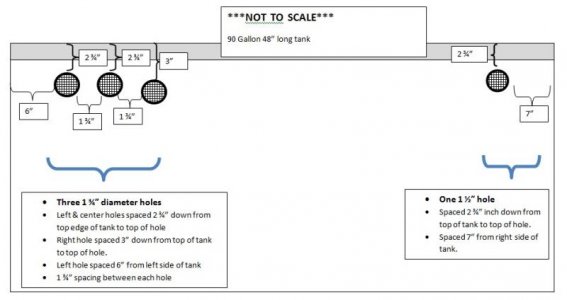BeanAnimal
Premium Member
The elbows on both th open channel and the siphon standpipe extend downward from the crest of the weir.
System Startup:
Water rises and flows over the crest of the weir in both the open channel and siphon standpipes. The open channel standpipe is open to the the atmosphere and the siphon closed. The water falling through the standpipes displaces air and in effect acts like a piston or plunger, creating a vacuum behind it. That vacuum pulls in more air or water depending on what is available. That is, the siphon standpipe pulls in more water because that is what is available at its opening. The open channel standpipe pulls in air from its atmoshpheric vent.
System Equillibirum:
The siphon standpipe opening (again below the crest of the weir) is under negative pressure (suction) and therefore draws water from below the weir level. If the water rises in the overflow box (you adjusting the valve) the water may begin to flow over the weir again. If the water drops too low (you adjusting the valve) then water does not flow over the open channel weir. If the water gets too low in the box, the siphon draws in air and breaks.
There are plenty of small variables that have been accounted for in this system. Imagine a MUCH deeper box with the down turned elbow on the siphon standpipe extending 6" below the crest of its weir. We may be able to get away with no open channel, as the water level (once the siphon starts) can fluctuate over almost the entire 6" range (or above it) and still be stable. The catch... getting that siphon to be able to start in the first place without air locking and then keeping it from quickly flushing due to rapid flow rate increase. The reality... the sweet spot will be about the same as it would have been without the downward extension.
Hope that helps and gives you some insight into the mechanics (flow dynamics) of the desgin.
System Startup:
Water rises and flows over the crest of the weir in both the open channel and siphon standpipes. The open channel standpipe is open to the the atmosphere and the siphon closed. The water falling through the standpipes displaces air and in effect acts like a piston or plunger, creating a vacuum behind it. That vacuum pulls in more air or water depending on what is available. That is, the siphon standpipe pulls in more water because that is what is available at its opening. The open channel standpipe pulls in air from its atmoshpheric vent.
System Equillibirum:
The siphon standpipe opening (again below the crest of the weir) is under negative pressure (suction) and therefore draws water from below the weir level. If the water rises in the overflow box (you adjusting the valve) the water may begin to flow over the weir again. If the water drops too low (you adjusting the valve) then water does not flow over the open channel weir. If the water gets too low in the box, the siphon draws in air and breaks.
There are plenty of small variables that have been accounted for in this system. Imagine a MUCH deeper box with the down turned elbow on the siphon standpipe extending 6" below the crest of its weir. We may be able to get away with no open channel, as the water level (once the siphon starts) can fluctuate over almost the entire 6" range (or above it) and still be stable. The catch... getting that siphon to be able to start in the first place without air locking and then keeping it from quickly flushing due to rapid flow rate increase. The reality... the sweet spot will be about the same as it would have been without the downward extension.
Hope that helps and gives you some insight into the mechanics (flow dynamics) of the desgin.







